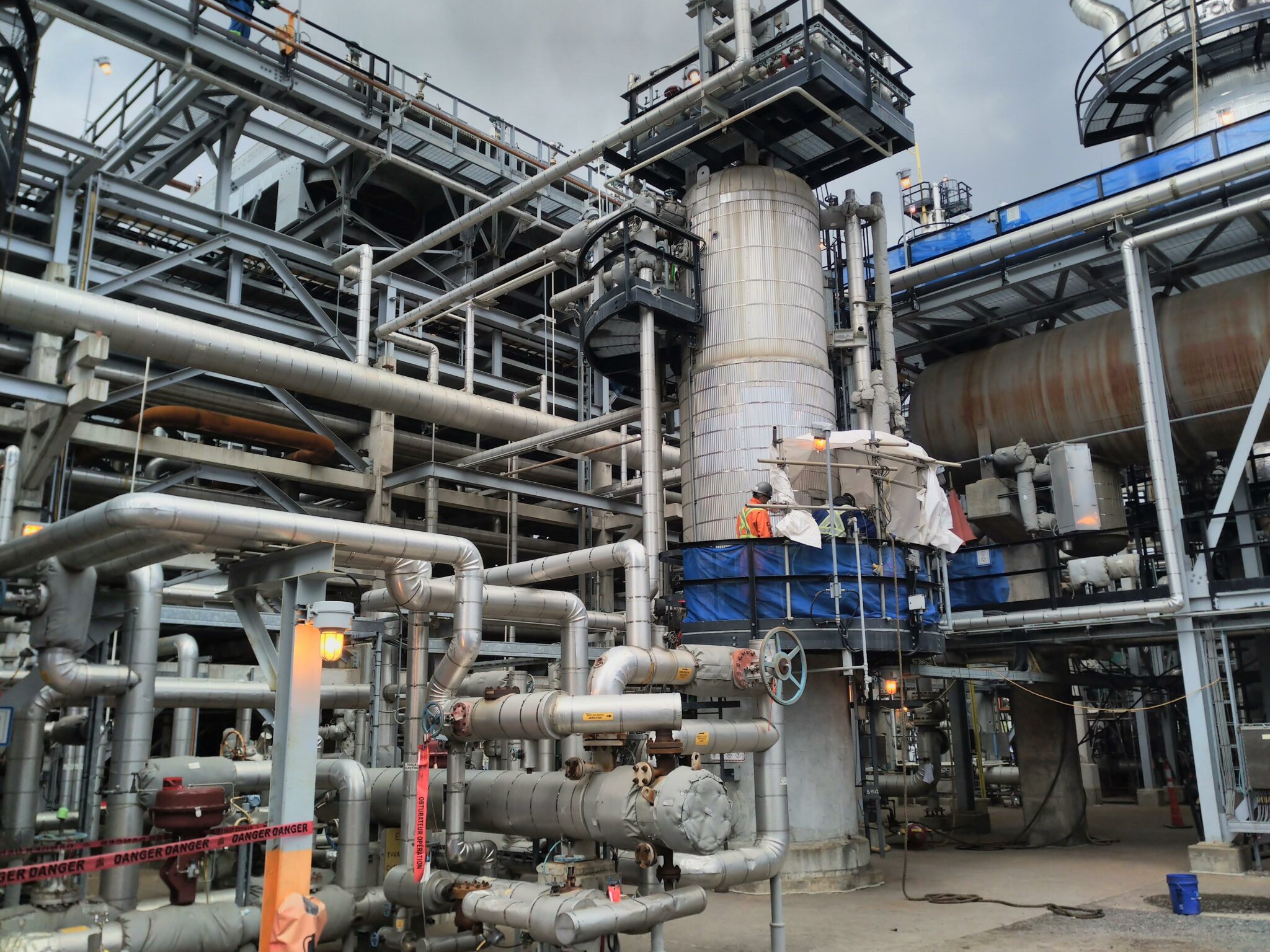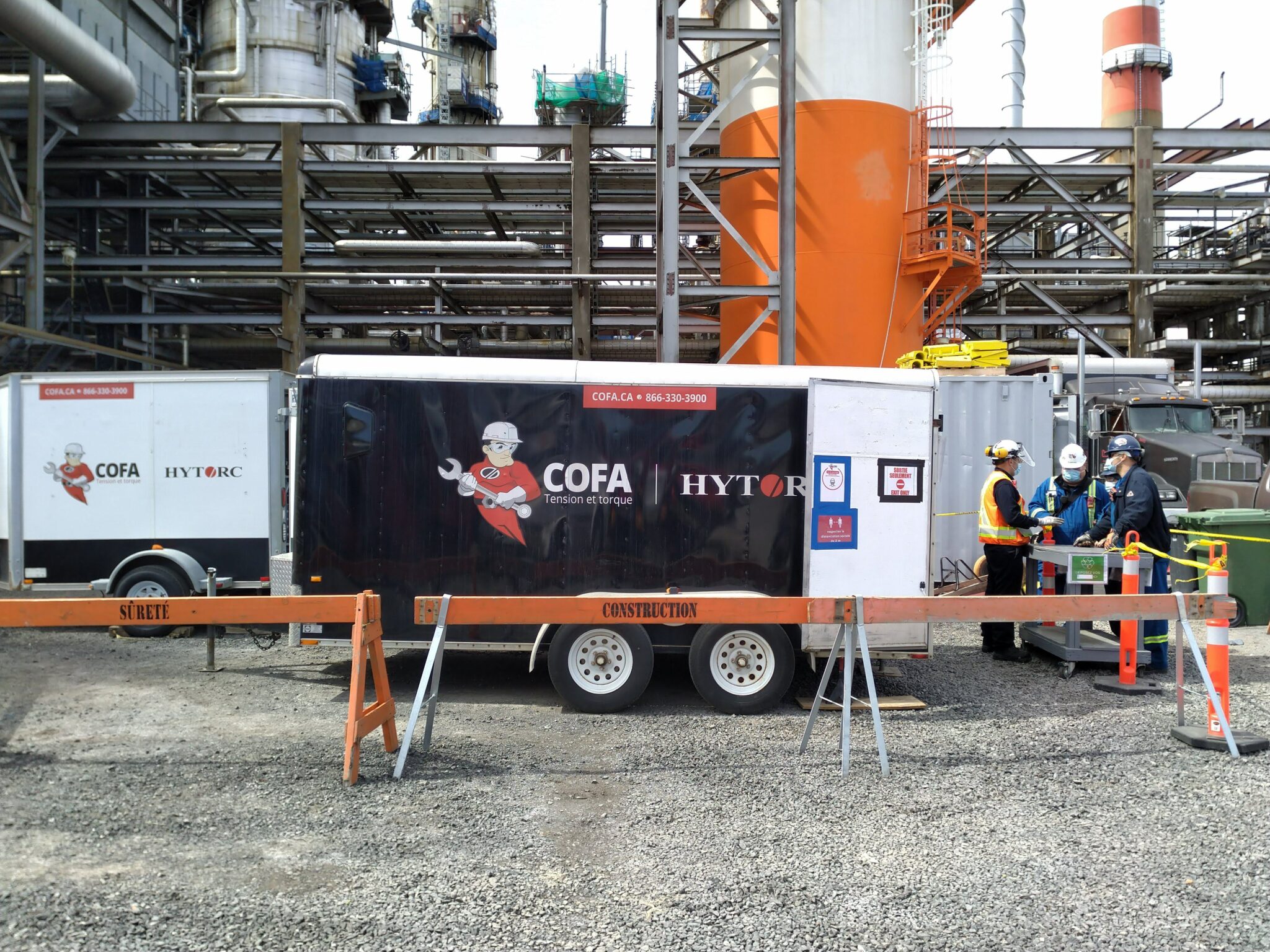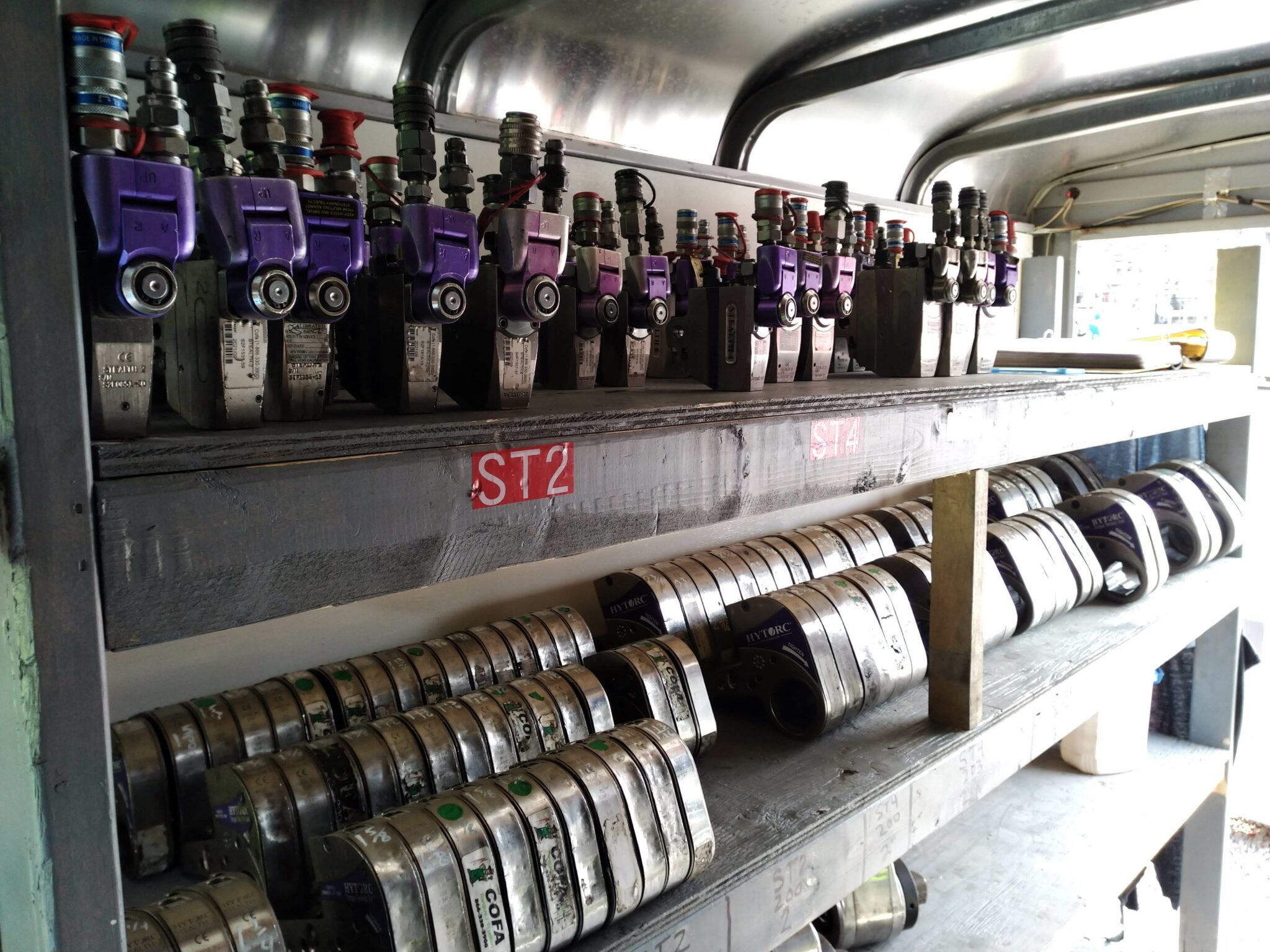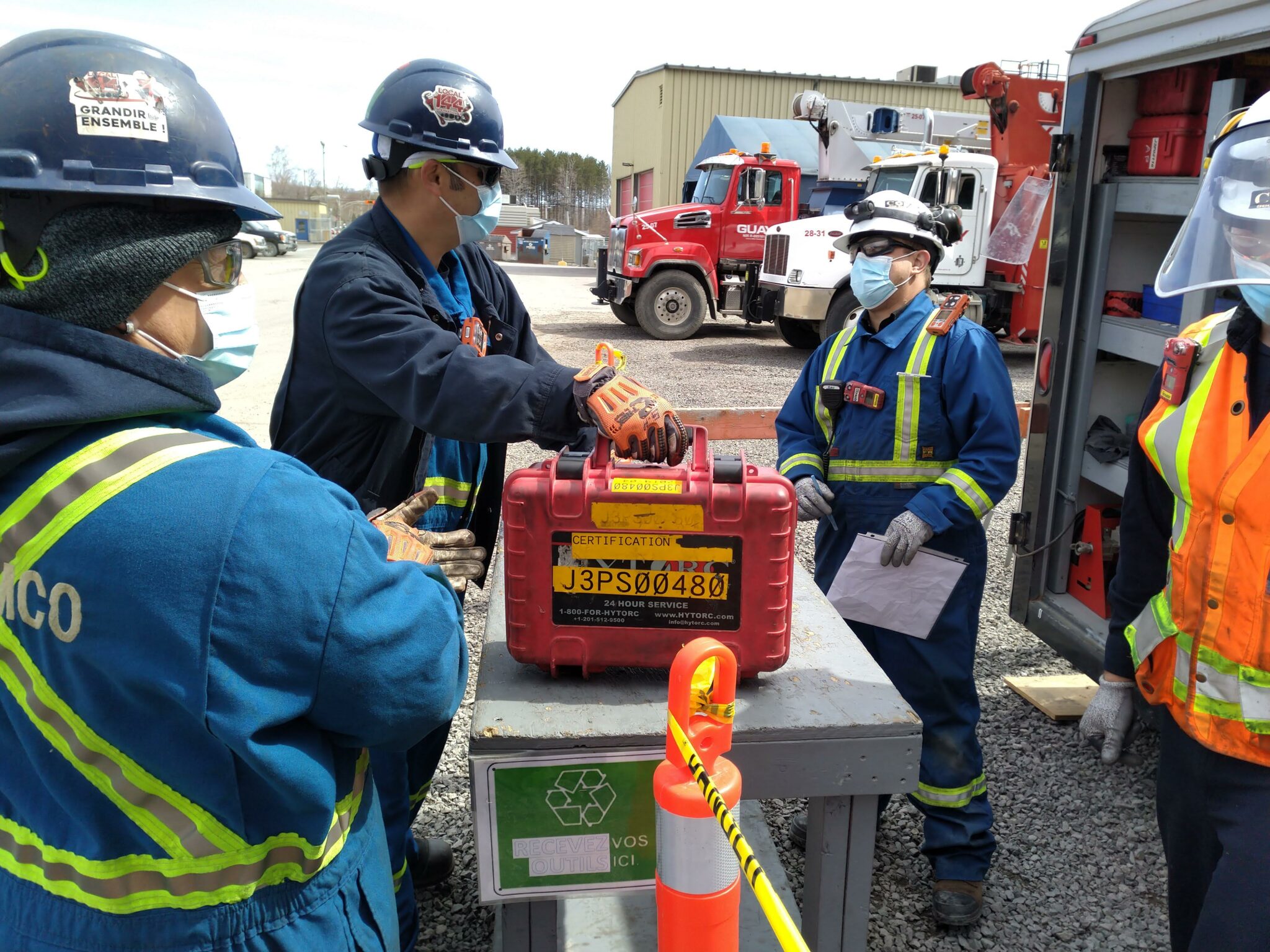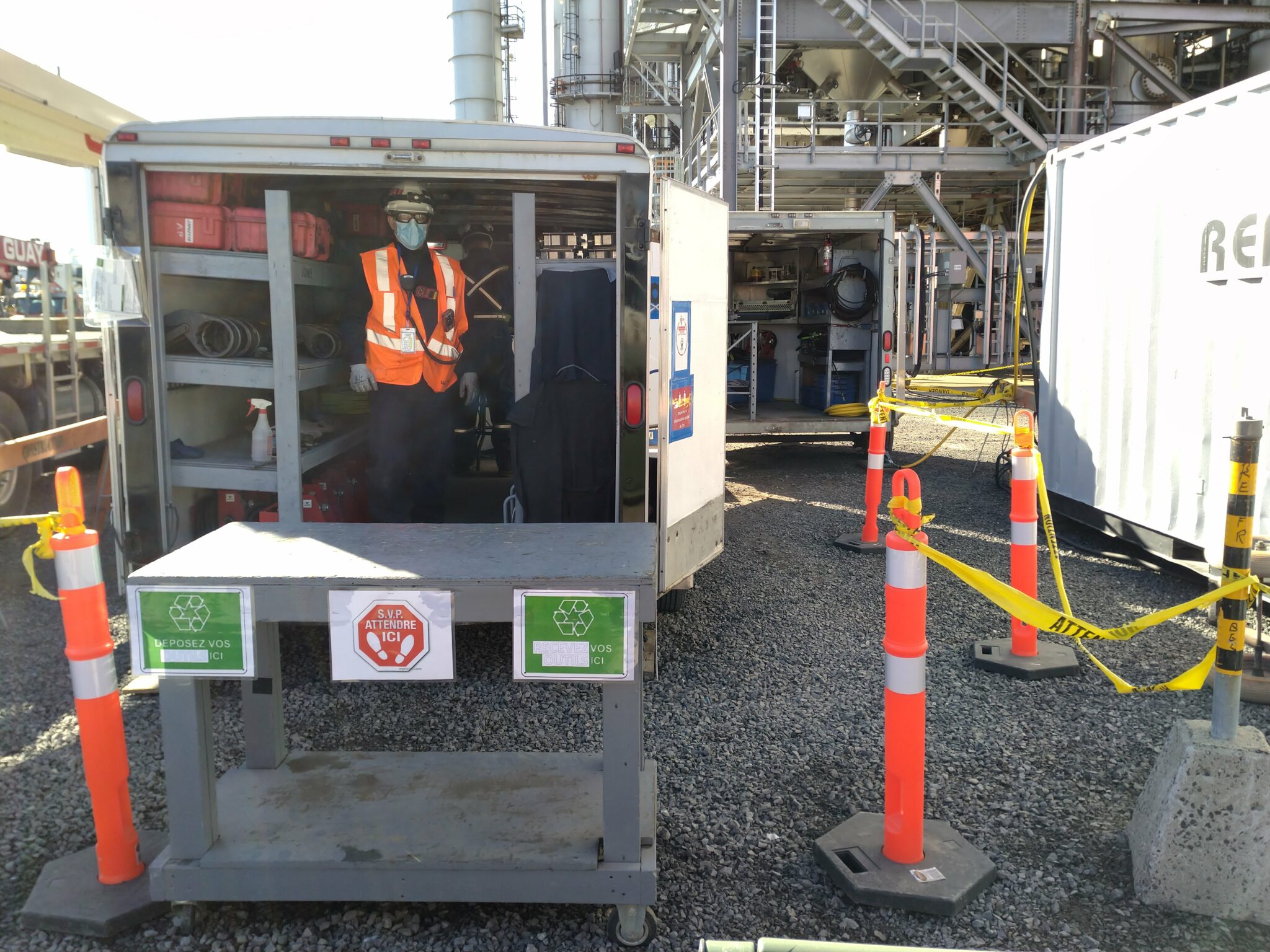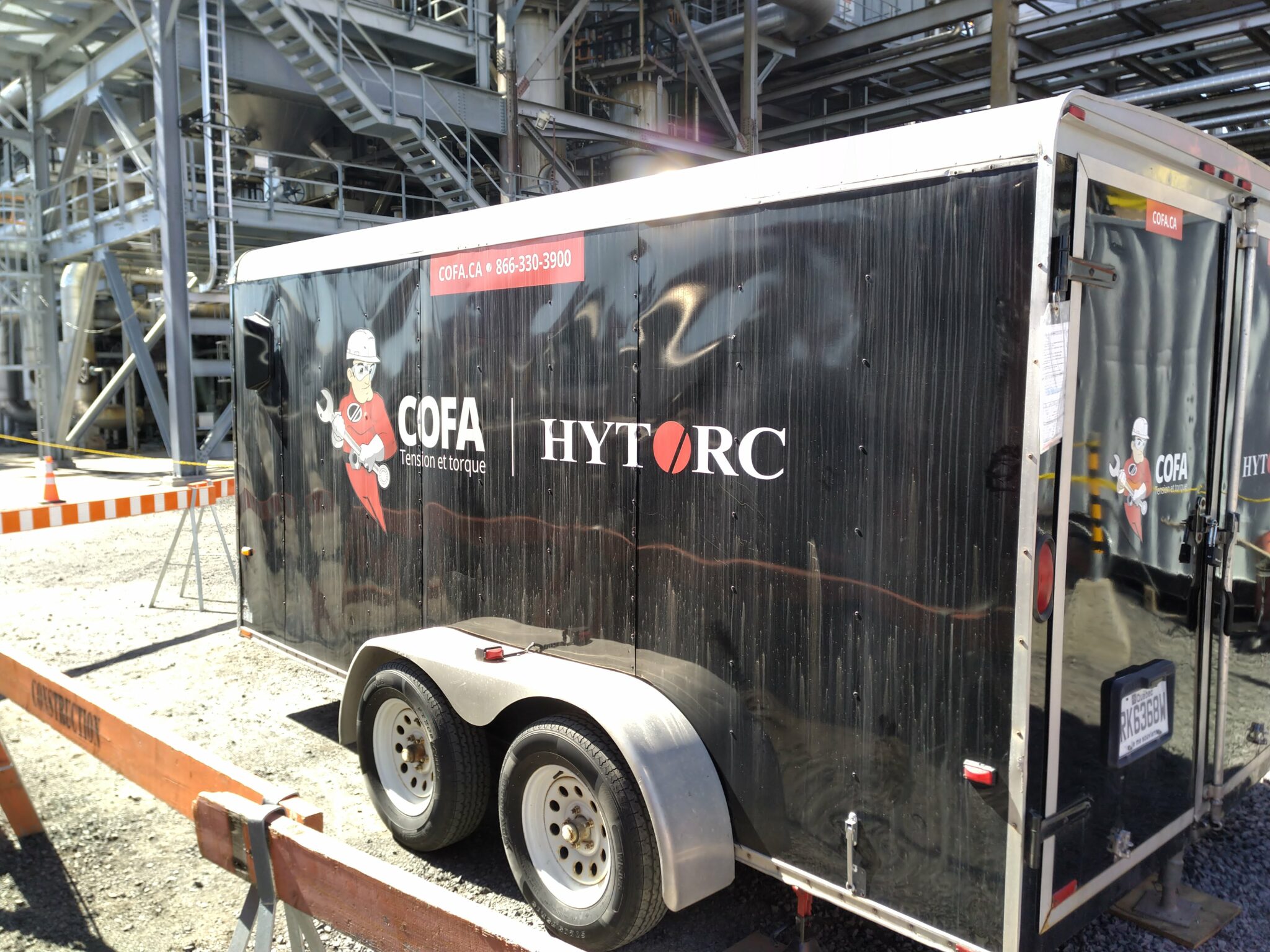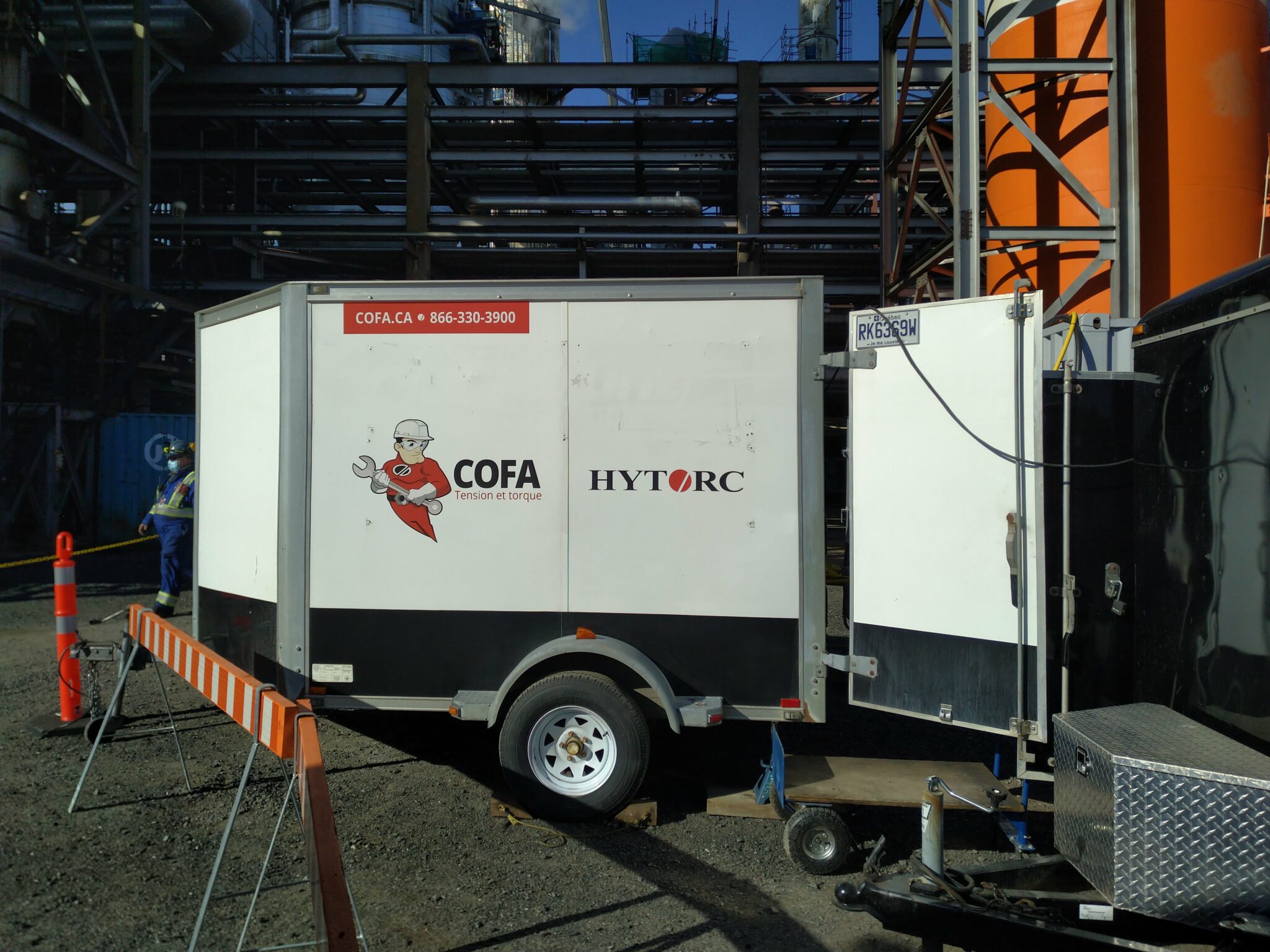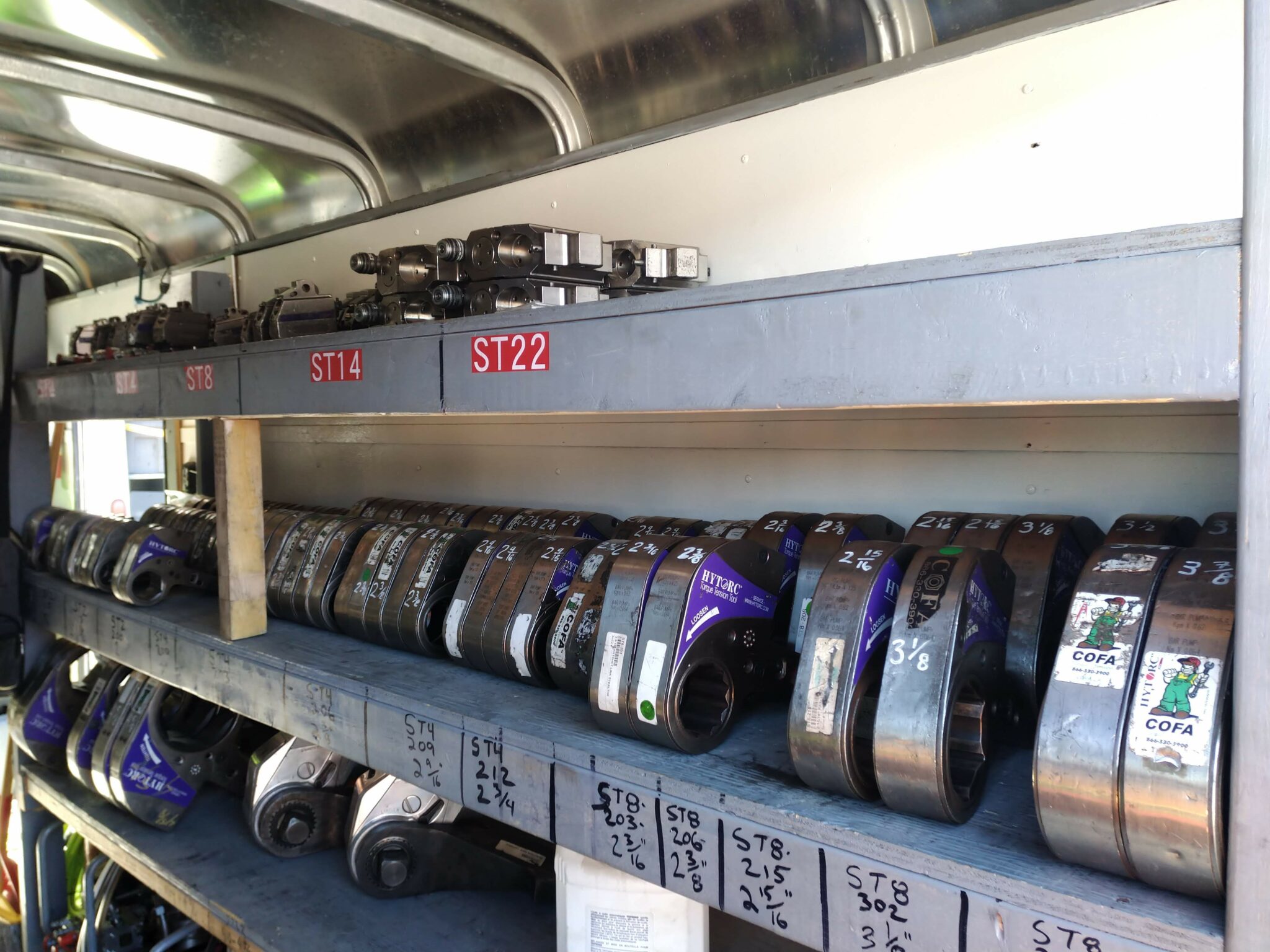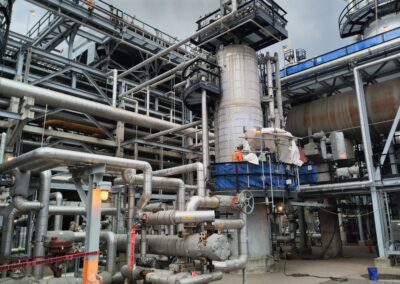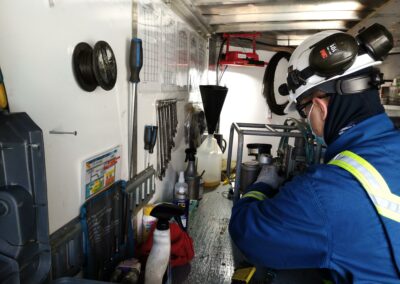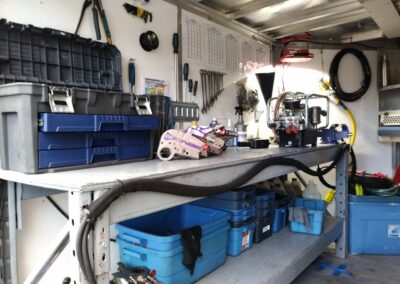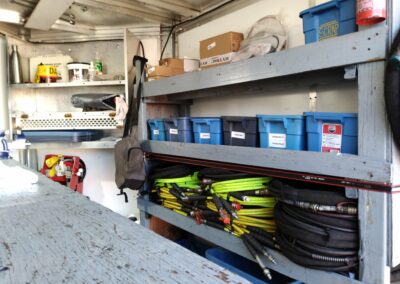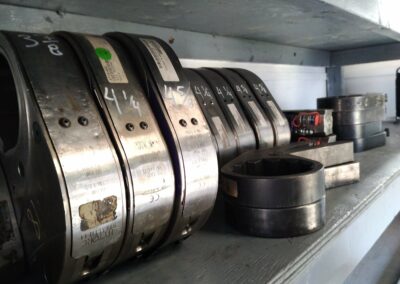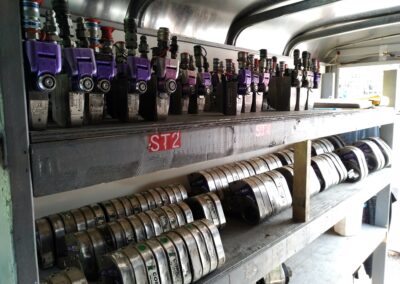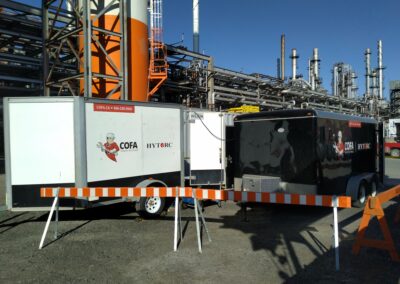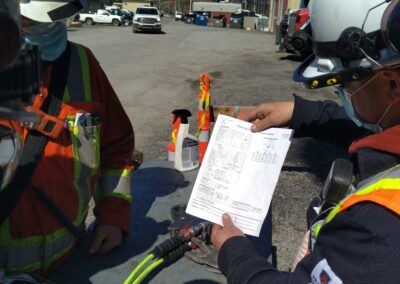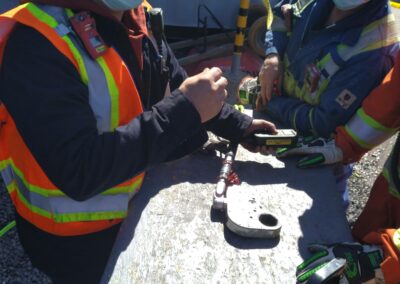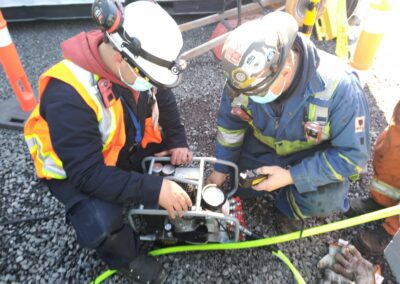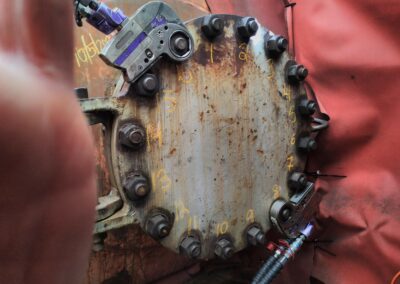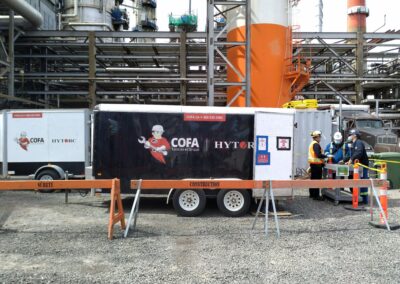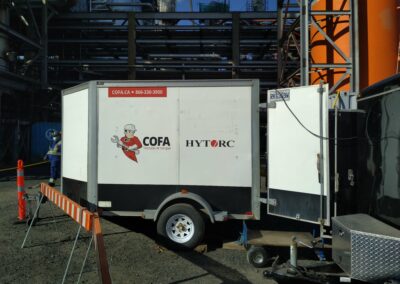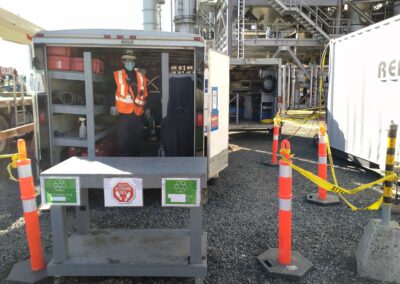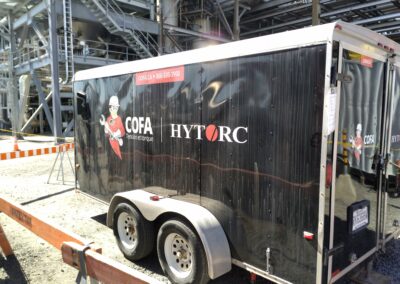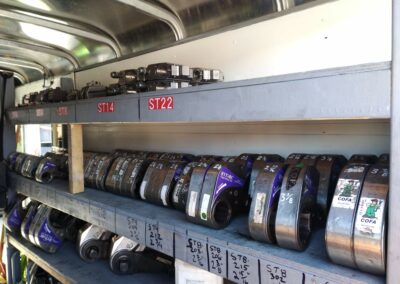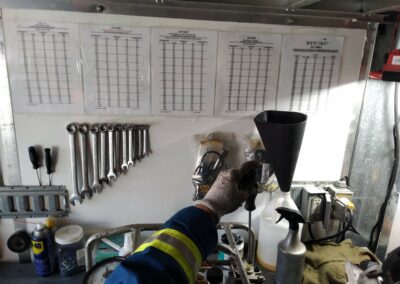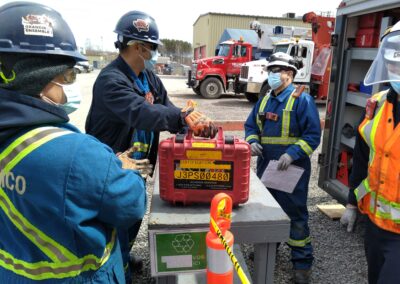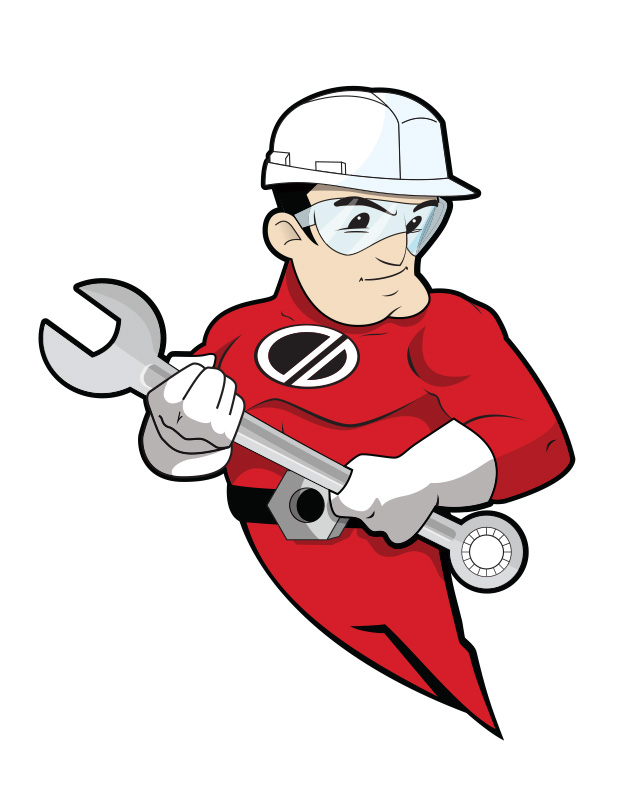Controlled tightening during maintenance shutdown: everything you need to know!
A major maintenance shutdown is complex and involves many steps and simultaneous work.
Controlled tightening is often the final step after disassembly, maintenance and reassembly.
If the clamping stage is compromised, all the rest of the work done beforehand is worthless… because production cannot be restarted.
That’s why a controlled clamping partner is essential to the success of a project of this scale.
1. Planning a maintenance shutdown: the first step.
At the planning stage of a production shutdown, you need to establish :
What needs to be done and when!
You should try to anticipate everything that needs to be done: the scope and nature of the project and all the details of the clamping work to be carried out.
At Cofa, as bolting experts, we’re best equipped to help you plan your bolting job efficiently.
THE RIGHT COMMUNICATION BETWEEN THE RIGHT PEOPLE!
(The key: the right information to the right person!)
First and foremost, our team must have ALL THE INFORMATION concerning the nature of the applications and their technical aspects before starting work.
For the list of technical aspects:
Put the Cofa team in touch with the engineering department and/or the maintenance shutdown manager.
- Application
Where will the torque be applied? (valve, flange, coupling, motor mount, heat exchanger, etc.). - Torque required* (Lbs/ft or NM)
*If you don’t know, it’s imperative to have a procedure (ask our engineering team) - Stud/bolt size
(Size of stud, bolt and socket required (AF pan to pan)) - All bolting grades
- Number of bolts to be tightened (per application)
- The environment in which you bolt
(confined space, dark, bright, indoors, outdoors, high temperature, etc.) - Send us an image of the application space (a close-up photo -of a bolt- and a distant photo -of the entire workspace-).
If you are missing any of this information, please contact a member of our team who can guide you through this step.
Once all the information has been gathered, we can draw up a list of optimal solutions for each application.
Establish controlled tightening procedures.
This allows us to do the best possible job, respecting deadlines and bolting procedures for consistent quality throughout the job.
Compliant clamping procedures promote safe, efficient and cost-effective work!
For tool supply and planning:
By establishing contact between the Cofa team and the purchasing/procurement department, we can plan budgets in advance.
In this way, we can ensure on-time delivery of equipment and achieve the best possible profitability for the bolting component.
Putting the right people in touch with each other saves time and effort on both sides.
FOR YOU, it means having the right procedure to ensure that work is done according to standards (ASME-PCC-1) for all workers on site (in clamping).
FOR US, it means we can do the best possible job, respecting deadlines and bolting procedures for equal quality in all aspects of the job.
Click on photos to scroll
2. Logistics and equipment management
Equipment and inventory management is one of the “keys” to a successful maintenance shutdown!
Choose the right tools and equipment for the work to be carried out during production shutdown.
This planning stage provides the tools needed to carry out the work.
Having a list of the right tools helps avoid slowdowns during maintenance shutdowns due to a lack of suitable tools or accessories for controlled tightening work.
As well as avoiding unnecessary loss of time, this helps to ensure that work is carried out safely and with the right equipment.
Take inventory: Assess what’s there and what’s missing.
In terms of tightening and bolting work, it is necessary to make a list of the inventory of torque tools.. Très souvent, un manque d’outils entraine un ralentissement car le travail est limité par le nombre d’outils versus nombre de tâches à effectuer ou nombre de travailleurs disponibles.
Once the inventory has been taken, you can either rent a clamping tool, or buy the missing torque tools or accessories (such as industrial sockets).
“The complete equipment list must be ready before work begins”
*NOTE: A SUCCESSFUL MAINTENANCE SHUTDOWN MUST BE PLANNED IN ADVANCE, AS THERE ARE DELAYS IN THE DELIVERY OF TOOL ORDERS AND CERTAIN MATERIALS.
Calibration certificates.
Do you have the tools?
We make sure they’re ready to use!
If the company already owns the tools, it must ensure that they are maintained and calibrated.
When you have a maintenance shutdown costing millions, there’s no time to be working with bad, uncalibrated or even defective tools. All our tools and equipment are always serviced, calibrated and ready for use!
Our team does everything to ensure your peace of mind when a home inspector visits!
3. the “key” element of quality: training!
Have the right worker with the right tool doing the right job at the right time…
That’s the COFA method!
Training before, during and after maintenance shutdowns!
Having the right worker with the right tool doing the right job at the right time is crucial!
Because, as we shall see, the proper use of equipment requires specific, comprehensive training.
4.proper use of equipment
TRAINING IS ESSENTIAL, BECAUSE EQUIPMENT MISUSE CAN BE VERY COSTLY!
Here’s a short list of risks associated with equipment misuse:
- Incorrect use = increased risk of injury.
- Risk of tool damage (additional cost for repair or tool replacement)
- The non-negligible costs of an injury (time off work, training, replacement, etc.)
- THE WORST: In the event of a serious accident, the company may be completely shut down…
(death = danger of closure) - Improper tightening
- Increased delays, loss of time and money.
- Problems and consequences: poorly screwed wheel, leaky seal, valve with pressure leakage into ducts, damage, defective mechanical assembly that can lead to severe breakage or death.
- Environmental Risks
The Cofa solution!
To sum up, here’s how the ideal maintenance shutdown scenario should unfold.
1.good planning
Good project definition (gather and share all necessary information)
Good organization of tasks, budgets and schedules
Good communication between the right people
2. Good logistics
Good list of equipment and procedures
The right equipment for the right applications
Calibration and maintenance of necessary equipment
Equipment availability at the right time
3.good training
The right worker (properly trained) with the right tool doing the right job at the right time!
4. Good operation: proper use of equipment
On-site support and training. (on site support and training)
Greater safety during work
Effective results and assured quality
Cost reduction and optimum profitability.
The result: a safe, efficient and cost-effective maintenance shutdown!
Would you like to know how much time you could save on your project?
CALL US!
You can follow all COFA Hytorc’s activities on Linkedin
#COFA #COFAHytorc #bolting #industrialbolting #boulonnage #industriel #sécurité #safécautravail #CSSTprevention #tension #Hytorc #superdouille #green #socket #highpressuresockets #greensocket #hytorctools #Ecolinesocket #socketecologique #socketeconomique #Hytorcway #boltingsolutions #boulonnagesolutions #torque #torquesolutions #hightorque #torquewrench #hightorquewrench #douilledurable #DouilleHautRendement #hytorcmanualtorque #serragecontrolé #boulonnage #couple #cledynamometrique #torquemanuel #tension #lubrification #lubrifiantsindustriels #locationtorque #locationdetorque #locationOutilindustriel #SuperSocket

